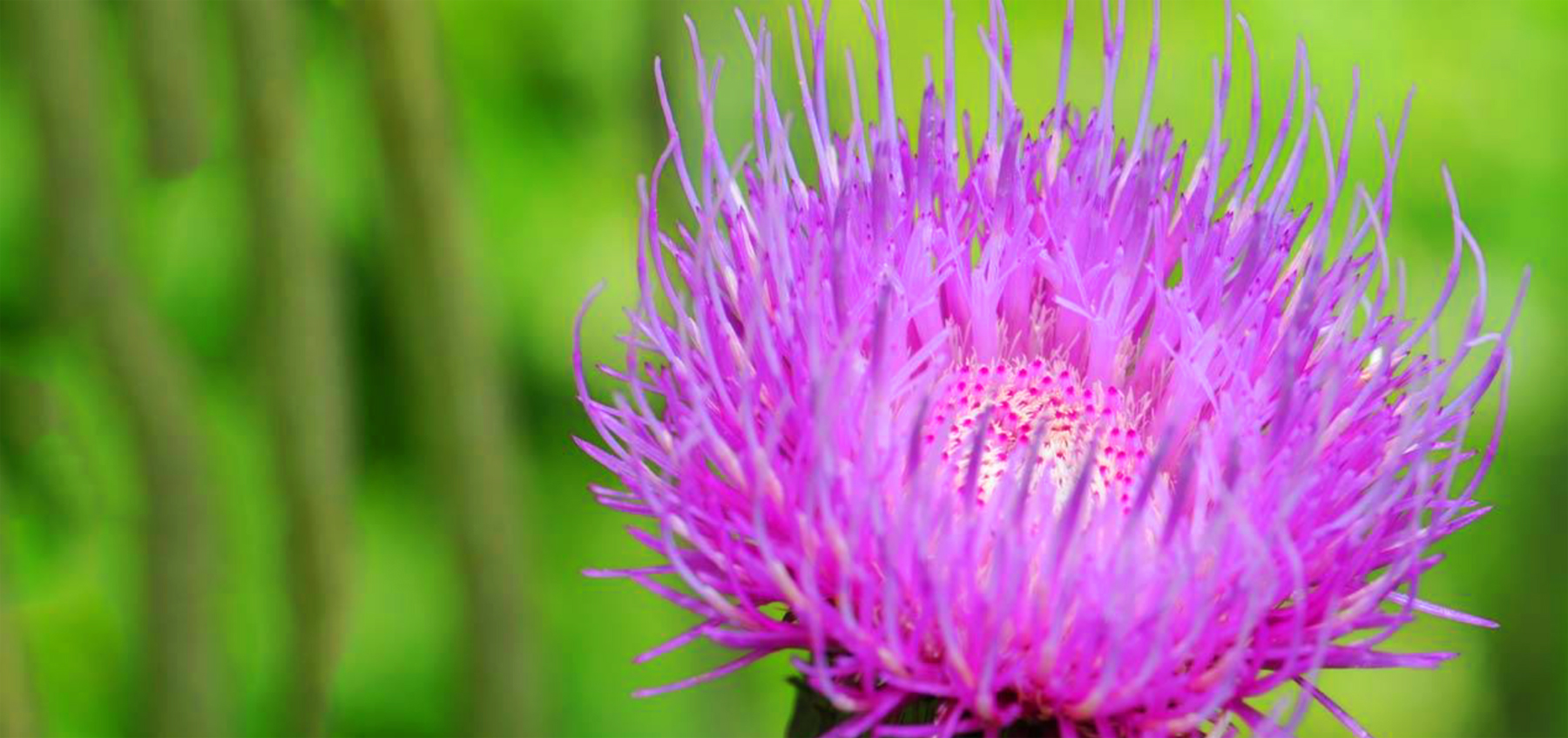Southerners Gleaning Thistles
By Deborah Fagan Carpenter

With rare exception, they are sexually abused as children — often by a family member. Shame and low self-worth have become an innate part of their being, and alcohol and drugs are an inevitable escape from that shame and the feelings of inadequacy. Because of readily accessible drugs like crack cocaine, addiction is soon to follow, and prostitution often becomes a means to support that expensive obsession. Thus is the all-to-common reason that many women find themselves on the streets, with fellow prostitutes and pimps as their only support system.
The Thistle is a common weed which sometimes appears in the cracks of those streets that the prostitutes walk. It’s a sturdy plant, and even under the harshest conditions, it often survives and produces a lovely and enchanting purple flower. A Nashville based program, Thistle Farms, originally named Magdalene has spawned a growing number of residential homes designed as a safe haven to enable women to escape the bondage of addiction, prostitution, trafficking and homelessness. These homes offer addicted and broken women the opportunity to become survivors like the Thistle, and to bloom as the beautiful flowers the universe intended.

Living Room at the Community of St Therese of Lisieux
The Community of St Therese of Lisieux is the first branch of the Magdalene system to be established in Memphis. Executive Director, Sandra Ferrell and her board, under the guidelines established by Magdalene founder, Reverend Becca Stevens, have secured enough privately funded grants to house up to three women at a time for a requisite period of two years. Stevens makes it clear that her model is not a halfway house, a recovery center, or a transitional center, but rather a home where the women live by themselves without authority. It is based on the Benedictine belief that community and love heals, and with the absence of authority the women have the freedom to grow.
No emotional growth can occur however, until the residents are completely drug and alcohol free, so the first requirement for admission is the completion of an in depth rehab program. The foundation of the home is twelve step based, and after the women leave rehab and join the community, they are required to go to 90 Alcoholics Anonymous or Narcotics Anonymous meetings in 90 days, and then are asked to attend at least five meetings a week for the balance of their residency.
For most of the women, their image of men has been distorted since childhood, and in addition to unhealthy relationships with men, they have serious trust issues with both sexes. So in spite of their attendance at AA or NA, Lisieux also requires them to attend some Sex and Love Addicts Anonymous meetings as well. Usually their participation in the gatherings at all of those organizations results in the development of healthy female relationships.

“Tattered Dreams,” by Chere Labbe Doiron
Health and dental issues are addressed immediately upon admission at Lisieux, and a long term plan to resolve outstanding court or financial obligations is initiated. For the first three months residents are required to attend intensive out-patient therapy at Serenity Recovery Center, and after completion of that program, they can either begin school or go to Hope Works, which is a personal and career development center. There they are taught resume skills, personal communication skills, and the organization guides them toward employment opportunities. If they’re lacking a high school diploma, Hope Works helps them secure their GED, and currently, two of the Lisieux women are taking a full load at Southwest Community College. No hour of the day is left unscheduled, but are filled with meetings, therapy sessions, volunteer work, counseling, daily meditation and everyday chores, so there is not time available for them to secure full-time employment, but they are required to seek part-time work if they are not enrolled in school.
Due to problems with credit, mental health issues, and drug addiction, many of the women are unemployable, so in 2001 the Magdalene program started its own company, Thistle Farms. Today Thistle Farms is not only the name of the mother ship of the organization, but the herbal company is helping to raise a large portion of the financial resources. A line of natural bath and body products are developed, packaged and marketed by the residents in Nashville, and currently the Lisieux community is training to eventually wholesale the products in Memphis. The purpose is not only to raise funds, but to teach the women marketable skills and help them learn to interact with the public.

“Reachin’ for Somethin’ Gr8ter—Reachin’ for a Better Day,” by Frank D Robinson
Prostitution has been described as the “oldest profession in the world,” but to quote Becca Stevens, “Women don’t end up on the streets by themselves. It takes a community of people and failed systems to help them get there; it takes drugs; it takes a culture that continue to think that you can buy and sell others at no cost to the other’s well-being. It takes ignorance such as legalizing prostitution, which will do no more than benefit the men.” The prostitutes themselves have always been considered the villains in the scenario, and rarely is there condemnation or prosecution for the buyers who are perpetuating the practice. Paying for sex is often viewed as acceptable behavior, but there is an increasing awareness that it is merely another form of human trafficking.
“There but for the grace of God, go I.” Anyone could be born into a situation where sexual abuse determines the tone of life and where the stage is set for addiction, despair and yes, prostitution. Whatever the reason for its occurrence, programs such as The Community of St Therese of Lisieux are vital, not only because they help these beautiful, resilient women find their way, but because they will educate the public about the misconceptions of why they ended up on the street in the first place.
Not all of the women in these programs will make it. But some will, and those who do will provide hope and inspiration for the women who are still living broken lives in fear and desperation. Magdalene and its off-shoot like The Community of St Therese of Lisieux offer at least a few of the many desperate women who have fallen victim to addiction and prostitution to find a path to a life of meaning and purpose—they allow the flower of the Thistle to bloom.
“You don’t have to worry about changing the world,” says Stevens. “The idea of loving the whole world one person at a time is a great way to live your life. I don’t worry about big or small. I’m okay being a drop in the bucket, and I love the idea of a thousand more people with us being drops in the bucket too.
Our message is that love heals and you cannot buy and sell women. We are trying to say to the wider culture that even though prostitution may be one of the oldest forms of abuse in history, women don’t have to stay in it or in addiction for the rest of their lives.”

The art at The Community of St Therese of Lisieux represents the journey the women in the program will take — from lost dreams, to looking for something greater, to becoming a person that others envy. All the work was created by Memphis artists.
To learn more about Thistle Farms and their line of products: http://thistlefarms.org;
For further reading: Biography of Becca Stevens; Nicholas Kristof (October 12, 2013), “From the Streets to the ‘World’s Best Mom’”, New York Times
The photo of the Thistle bloom is licensed under CC By 4.0, on Google Images–https://www.google.com/search, linked to www.stylecraze.com
The photo of the Thistle is licensed under CC By 4.0, on Google Images-, linked to Planetqgis.org, linked to www.Planetqgis.org


